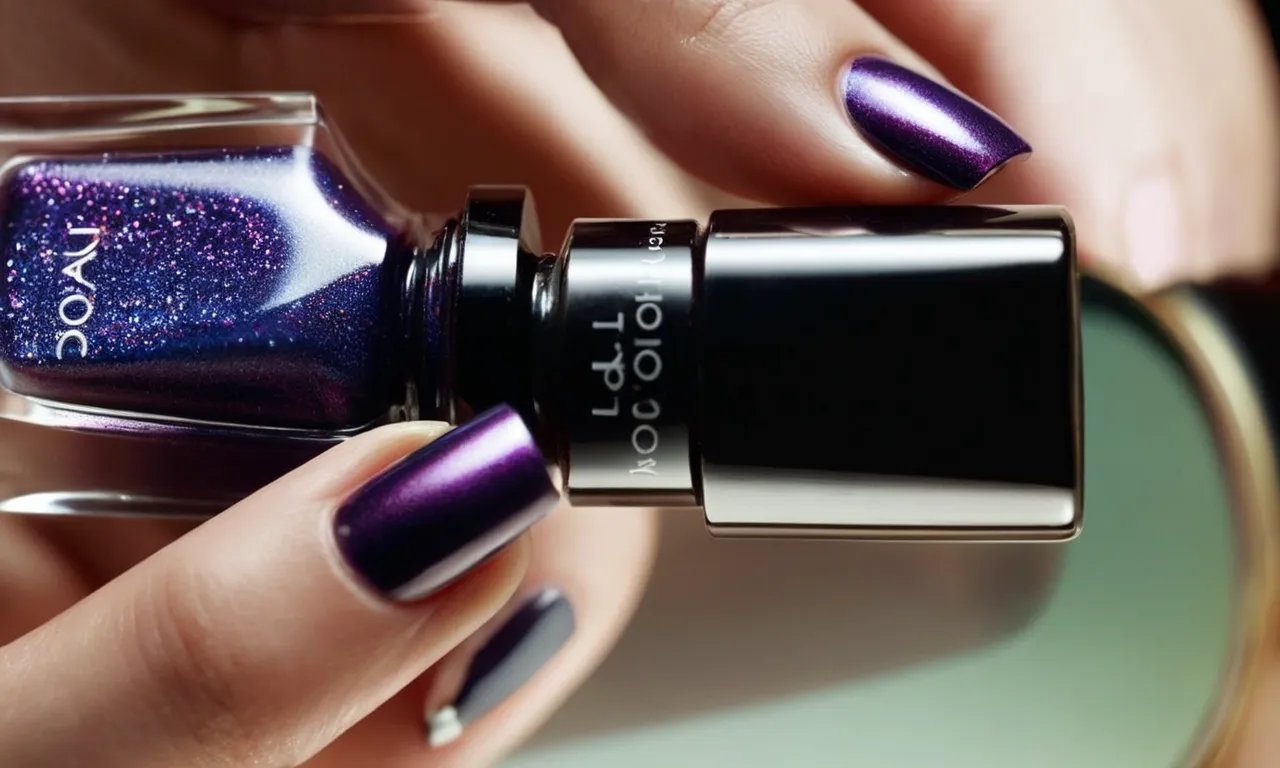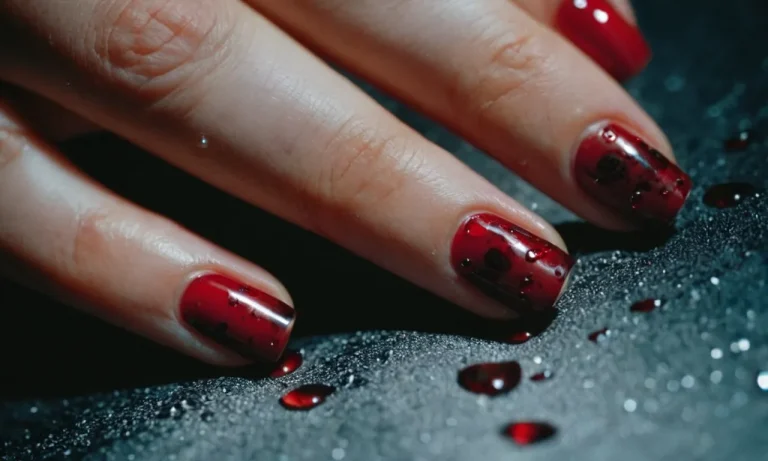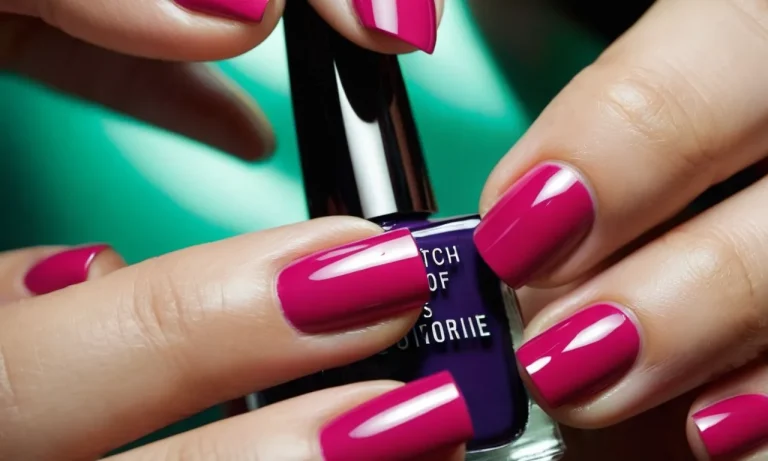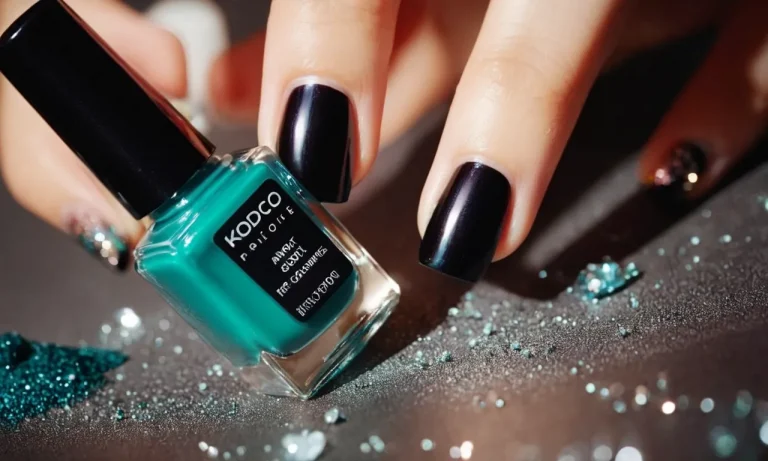Can You Put Nail Polish On Your Face?
Nail polish is often associated with decorating fingernails and toenails, but have you ever wondered if you can use it on your face too? With the wide variety of nail polish colors and finishes available, using nail polish on your face may seem like an exciting prospect to get creative with makeup looks.
If you’re short on time, here’s a quick answer: While not generally recommended, some types of nail polish can be used sparingly on the face when applied carefully over makeup. Any nail polish not designed for use on skin should be avoided to prevent irritation or unsafe ingredients contacting facial skin.
In this comprehensive guide, we will cover everything you need to know about using nail polish on your face. We discuss the safety considerations, best application tips if you do use nail polish as face makeup, how to remove it properly, and review better alternative face makeup products to use instead.
Is It Safe to Use Nail Polish on Your Face?
Using nail polish on your face may seem like a fun and creative way to experiment with makeup, but it does come with some risks. Here’s what you need to know about the safety and regulations around using nail polish on your skin.
Risk of Skin Irritation
Nail polish contains ingredients that are formulated specifically for use on the nails, not on the delicate skin of the face. Many of these ingredients can potentially cause irritation, itching, redness, and swelling if applied to the face. Some people may be more sensitive than others.
Acetone is a common solvent used in nail polish that is known to dry out the skin. Formaldehyde resin helps harden nail polish, but could lead to dermatitis on the face. And glitter particles could cause microtears and allow chemicals to penetrate deeper into the skin.
Repeated use increases the risks of an allergic reaction.
Toxic Ingredients
Certain chemicals in nail polish have been linked to health concerns with repeated exposure over time. For example:
- Dibutyl phthalate (DBP) – suspected endocrine disruptor
- Toluene – possible reproductive damage
- Formaldehyde – suspected carcinogen
While occasional use on small areas may not be harmful, regular application to large areas like the face could potentially allow absorption of these chemicals into the body.
FDA Regulations
The FDA regulates nail polishes as cosmetics, and prohibits hazardous color additives. However, they do not require pre-approval of products or ingredients, except for most color additives. While mainstream brands likely comply with regulations, the FDA has limited oversight over safety of ingredients.
Nail polishes designed specifically for use on the face would be required to adhere to more stringent safety standards. Using a nail polish not designed for the face bypasses these safety checks.
The FDA advises consulting a doctor before applying any nail polish to the skin, especially if you have allergies or skin conditions. Discontinue use if any irritation develops.
While using nail polish on your face isn’t encouraged from a safety perspective, there are safer cosmetic alternatives like eye shadows, lipsticks and face paints designed specifically for skin. Consult your dermatologist if you have any concerns about a product.
Application Tips If Using Nail Polish on Your Face
Choose a Non-Toxic Formula
When applying nail polish to your face, it’s extremely important to use a non-toxic, safe formula. Many regular nail polishes contain ingredients like formaldehyde, toluene, and dibutyl phthalate (DBP) which should never be used on your face.
Look for polishes labeled as “3-free”, “5-free” or “7-free” to avoid these harmful chemicals. Water-based polishes are also a safer bet. Do a patch test first to make sure you don’t have any reaction to the ingredients.
Apply Over Makeup, Not Bare Skin
It’s best to apply nail polish over your makeup, not directly onto bare skin. Putting it over foundation, powder, blush etc. creates a barrier that protects your skin. Applying nail polish directly on your face increases the risk of irritation, breakouts, and even chemical burns from ingredients like acetone.
So always use it as a topcoat over existing makeup for safety.
Use a Small Amount
When using nail polish on your face, you only need a tiny bit – a little goes a long way. Dip the brush lightly into the bottle so you get just enough to make a couple delicate strokes. Too much polish will look gloppy and unnatural. Start with a small amount and you can always add more if needed.
Applying with a light hand prevents polish from getting all over your skin.
Avoid Sensitive Areas
Some areas of your face are more sensitive and should be avoided when applying nail polish. Steer clear of the immediate under eye area, lips, nostrils and any blemishes or broken skin. The ingredients in nail polish can irritate and inflame these spots.
Stick to applying it only on thicker makeup over places like your eyelids, cheeks and forehead for the safest results.
How to Remove Nail Polish from Your Face
Use Makeup Remover
One of the easiest ways to remove nail polish from your skin is with a gentle makeup remover (check the ingredients first to make sure it’s non-irritating). Put a small amount on a cotton round or soft cloth, then gently rub the area where the polish got on your face.
The acetone or oil in the remover should swiftly break down the nail lacquer so you can wipe it off. Be careful not to scrub too vigorously. Repeatedly apply fresh remover and wipe gently until all traces of color have been eliminated.
For best results, use a remover specifically formulated to take off long-wearing nail polish as these are designed to dissolve stubborn lacquers. Some popular options include Zoya Remove Plus Nail Polish Remover and Beauty Secrets Antibacterial Nail Polish Remover.
Try Oil Cleansing Method
Another gentle but effective approach is to use an oil cleanser formulated with nourishing plant-based oils. Natural oils excel at breaking down long-wear makeup and nail polishes. Some of the best oils for removing stubborn lacquers include almond, olive, coconut, jojoba, and sunflower seed.
Gently massage the oil cleanser into the affected area of skin for 30-60 seconds before wiping away with a soft washcloth.
You can also DIY your own facial oil cleanser at home by combining oils like sweet almond and castor oil. Mix a few drops of each with a little bit of water to thin out the texture before applying to the skin. Let it sit briefly before gently wiping off.
The oils will carry away every last trace of colorful pigment.
Gently Exfoliate If Needed
If remnants of stain remain after using remover and oil cleansing, try finishing up with a very gentle exfoliant to slough off the top layer of skin cells. This takes away any leftover hints of color. Use an exfoliant made specifically for the sensitive facial area, with rounded grains that won’t cause microtears.
Wet your face first, then gently rub the exfoliant around the stained area using light, circular motions. Rinse thoroughly. Finish by applying a nourishing moisturizer. Some smart choices include ceramide creams and nutrient-dense oils like marula, rosehip seed, and sea buckthorn berry oil.
This helps restore moisture and heal skin.
With the right removers and gentle exfoliation, even the most stubborn long-wear nail polish should lift right off your face without leaving an awkward stain behind. Just take care not to scrub harshly as this can cause unnecessary irritation.
Treat your face delicately and patiently for best results.
Better Alternative Face Makeup Products
Glitter Eyeshadow or Pigments
Glitter eyeshadows and pigments are great alternatives to use on your face instead of nail polish. They come in a wide variety of shimmery colors and textures, making them perfect for creative and sparkly makeup looks.
Most glitter eyeshadows are designed to be safe for use around the delicate eye area, meaning they can also be used safely on other parts of the face.
Using a glitter eyeshadow is preferable to nail polish because eyeshadows do not contain the harsh ingredients found in nail polishes, such as formaldehyde, toluene, and dibutyl phthalate (DBP). These ingredients can be irritating and drying to facial skin over time.
Glitter eyeshadows also come in palettes with multiple color options for endless looks.
Face Jewels
Face jewels, like rhinestones and crystals, make a gorgeous alternative to painting designs on your face with nail polish. Face jewels come in all different shapes, sizes, and colors to fit your desired look.
The benefit of using face jewels rather than nail polish on your skin is that the jewel adhesive is designed to be gentle on facial skin. Nail polish can cause breakouts and irritation due to its strong formula and chemicals.
The adhesive on face jewels is temporary and washes off easily with makeup remover. Dazzle your face the safe way with pretty jewels!
Temporary Tattoos
Temporary tattoos offer vibrant designs in a safe, non-toxic formula that makes them ideal for face decorating. They last 1-5 days on skin and peel off easily when ready. The water-based formulas contain cosmetic-grade pigments that won’t cause adverse reactions on skin like nail polish might.
Some reasons temporary tattoos are better than using nail polish on your face include:
- Made specifically for skin use with non-toxic ingredients
- Last longer than nail polish would
- Easy to apply and remove without harsh acetone
- Waterproof and transfer-proof formulas available
- Hypoallergenic options available for sensitive skin
With the variety of vibrant colors, designs, and safety available from temporary tattoos, they beat out nail polish for decorative looks. Protect your facial skin while still accessorizing with these body art alternatives.
Conclusion
While using nail polish on your face may seem like an exciting way to get creative with makeup, it does come with safety concerns and is not generally recommended for use on facial skin. If choosing to apply nail polish, extreme care should be taken to prevent irritation by following the tips covered here.
For best results, use high-quality glitter eyeshadow, face jewels, and temporary tattoos instead. These products are specifically designed for safe use on facial skin. With the right tools and techniques, you can achieve standout looks without risking your skin’s health.







